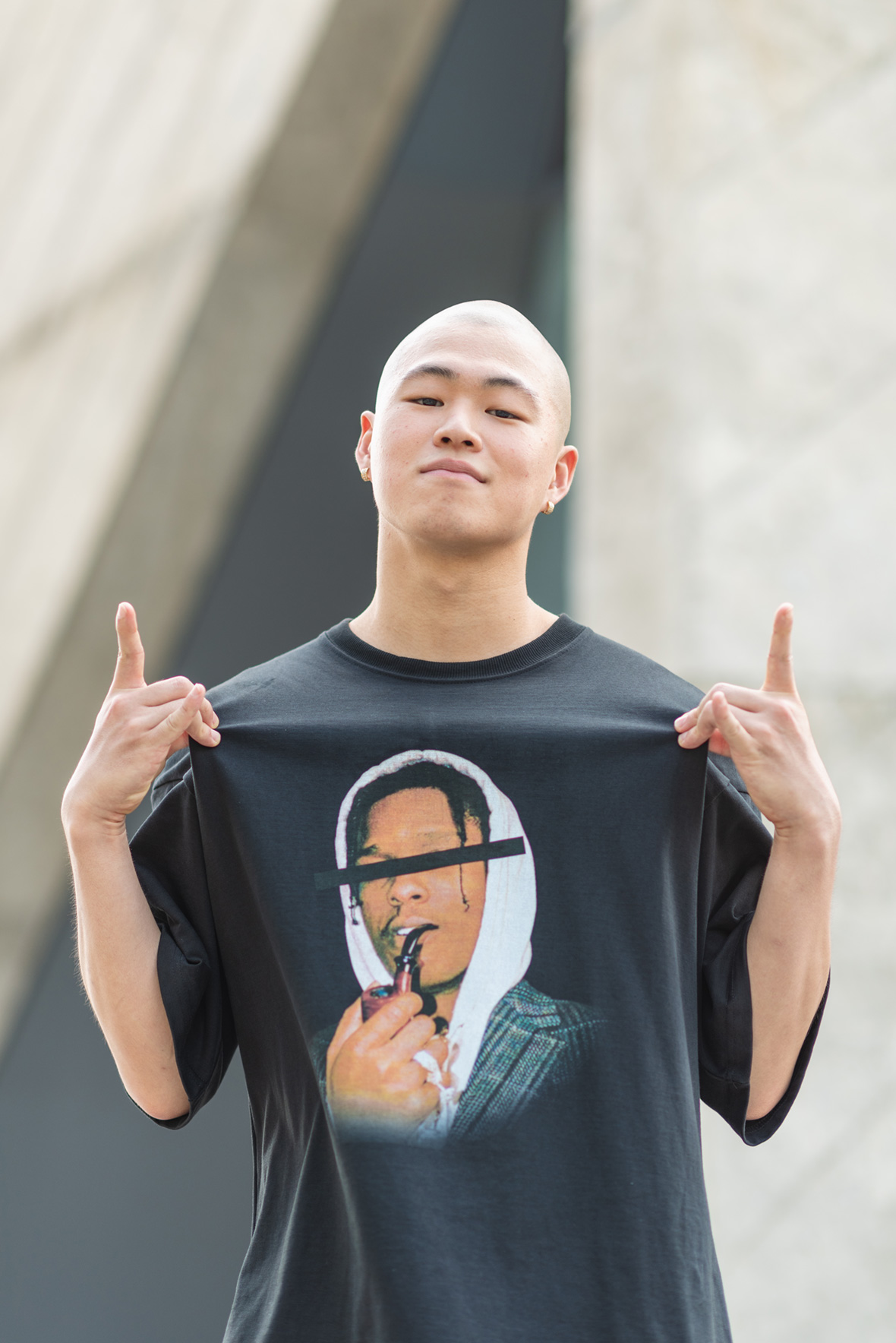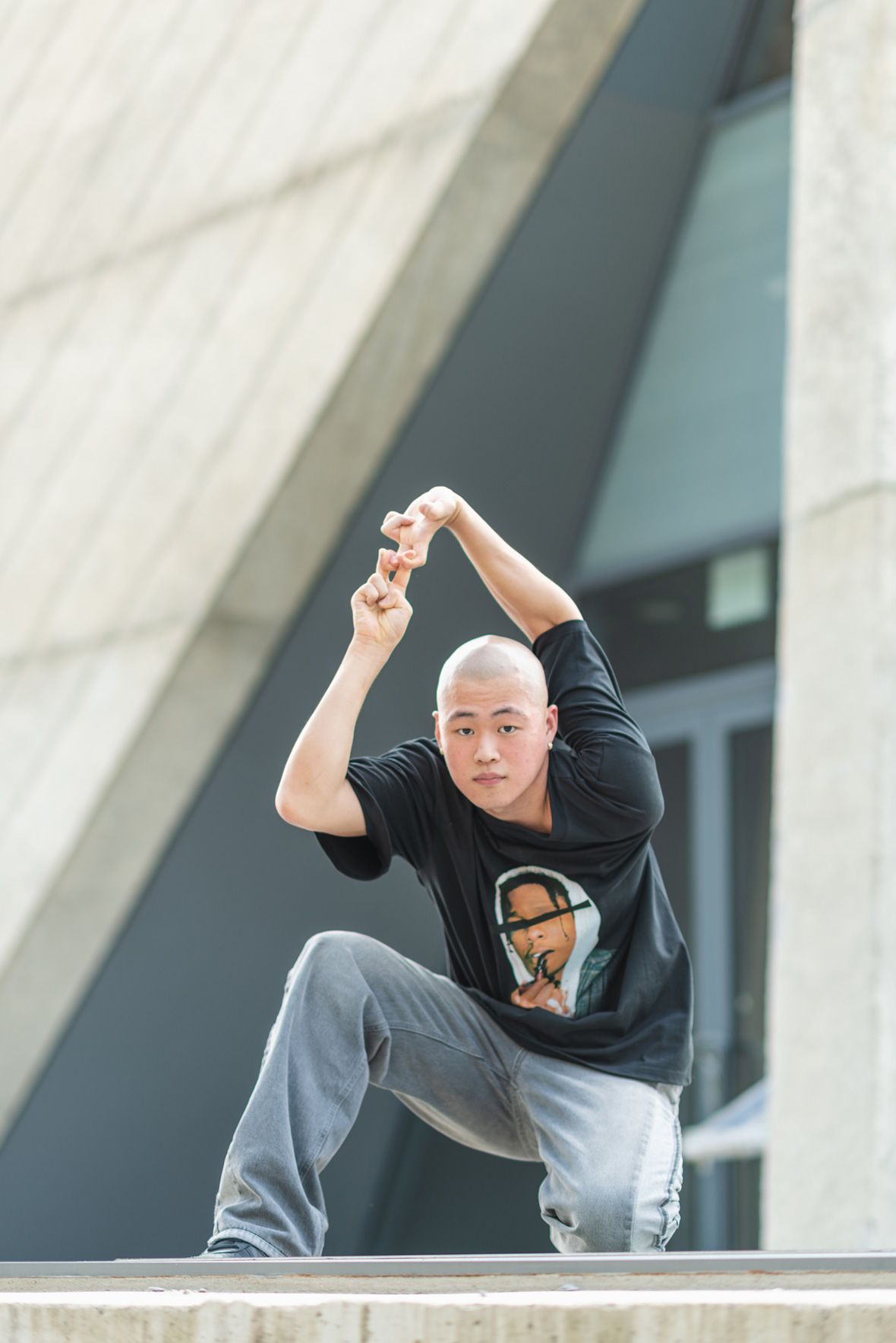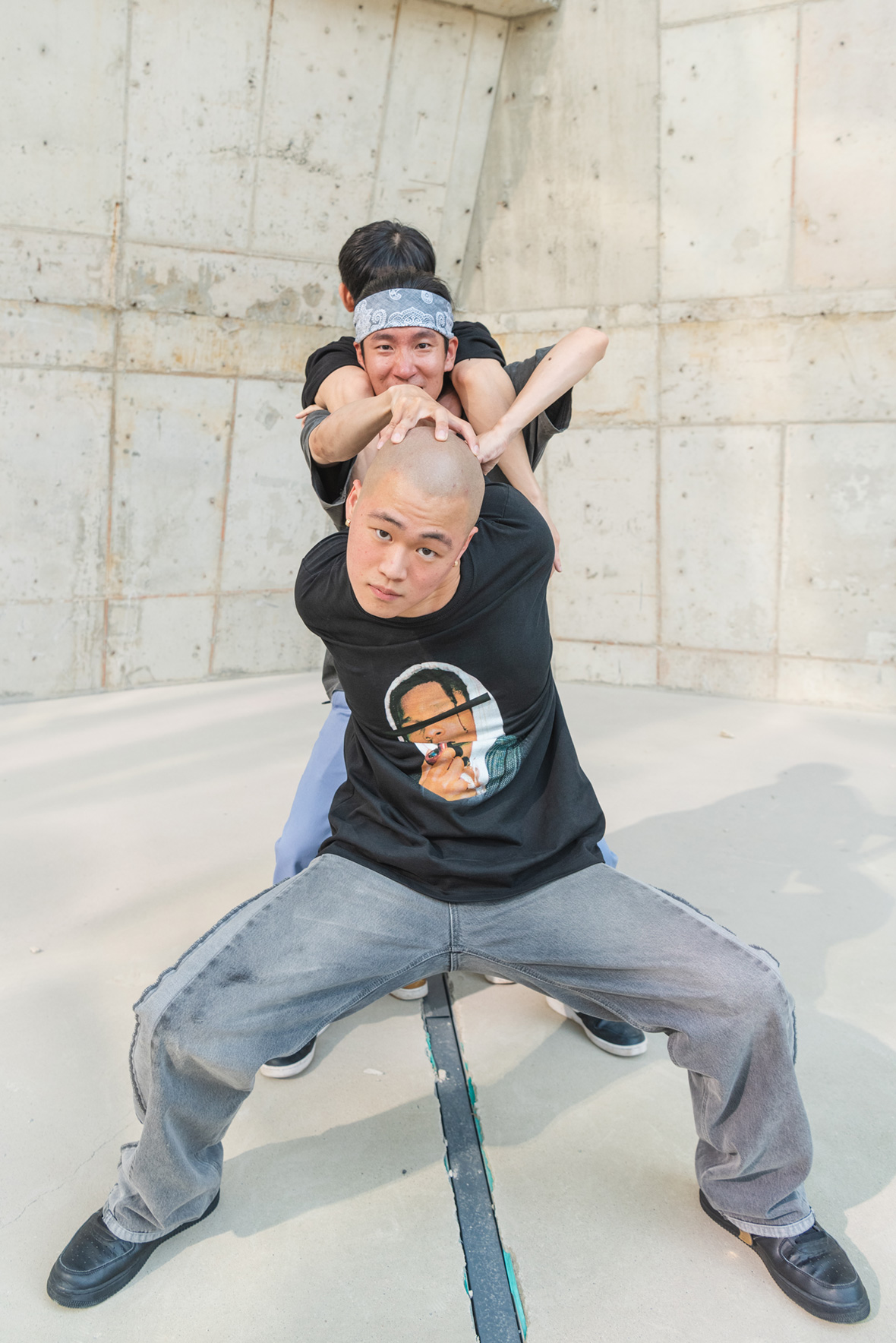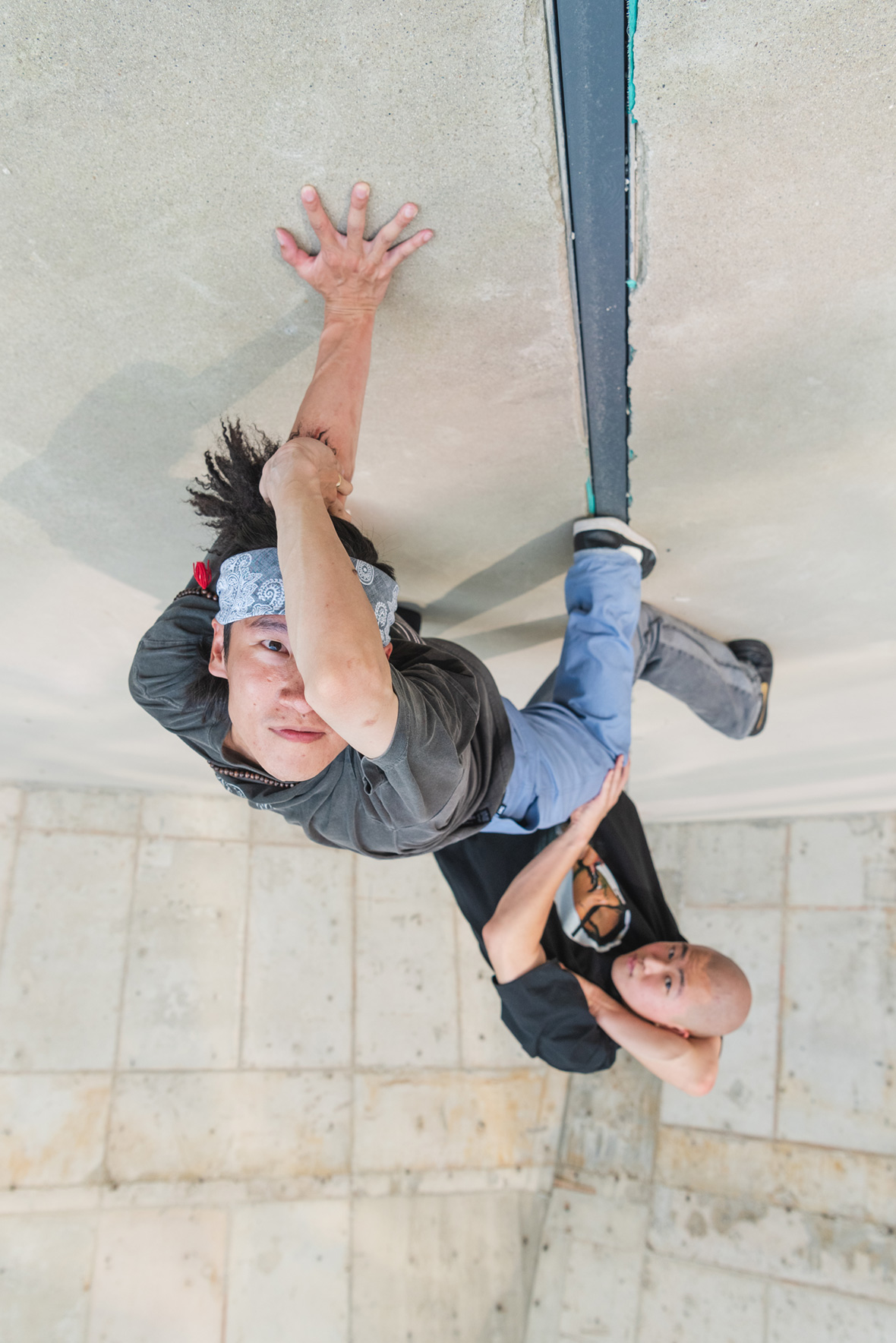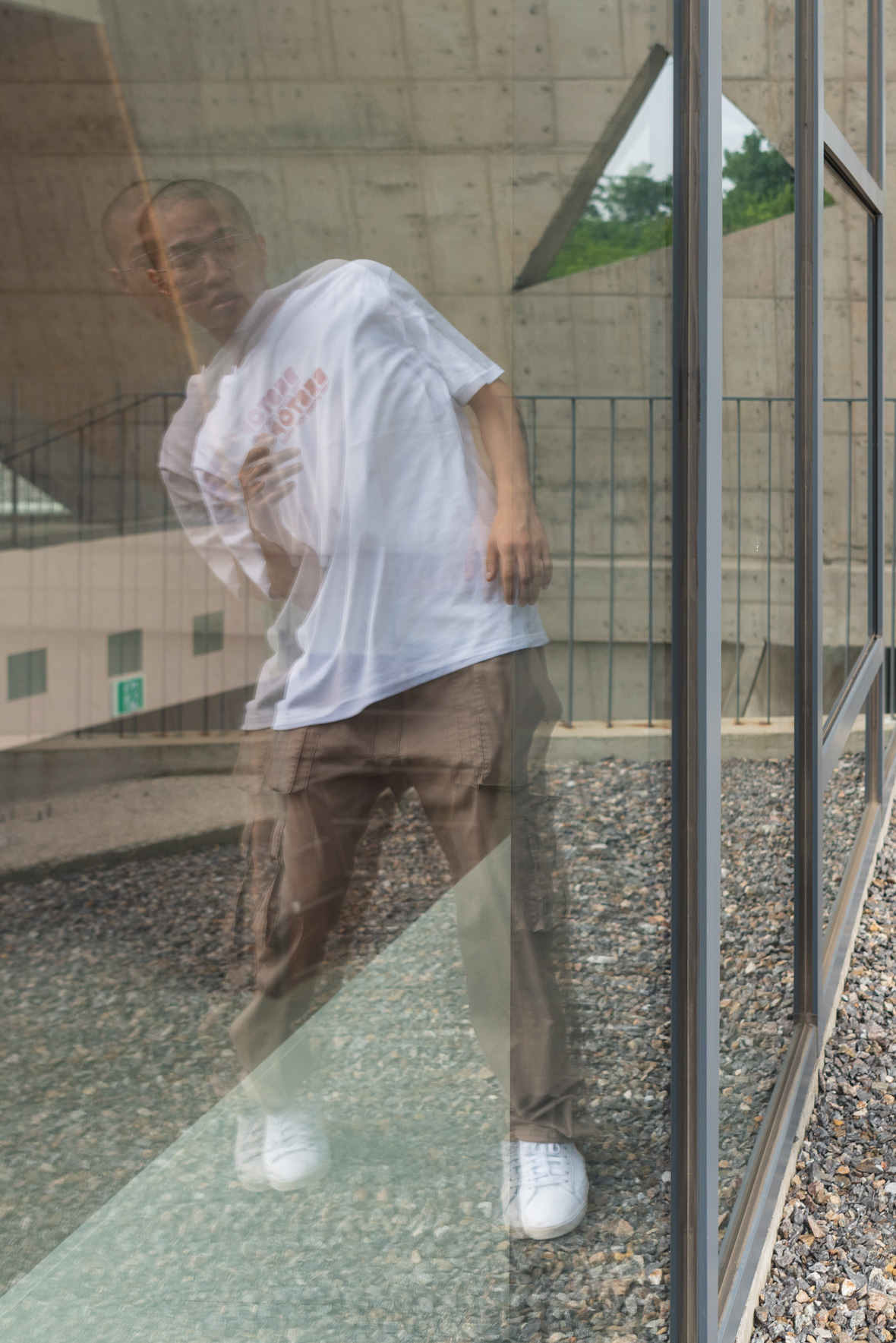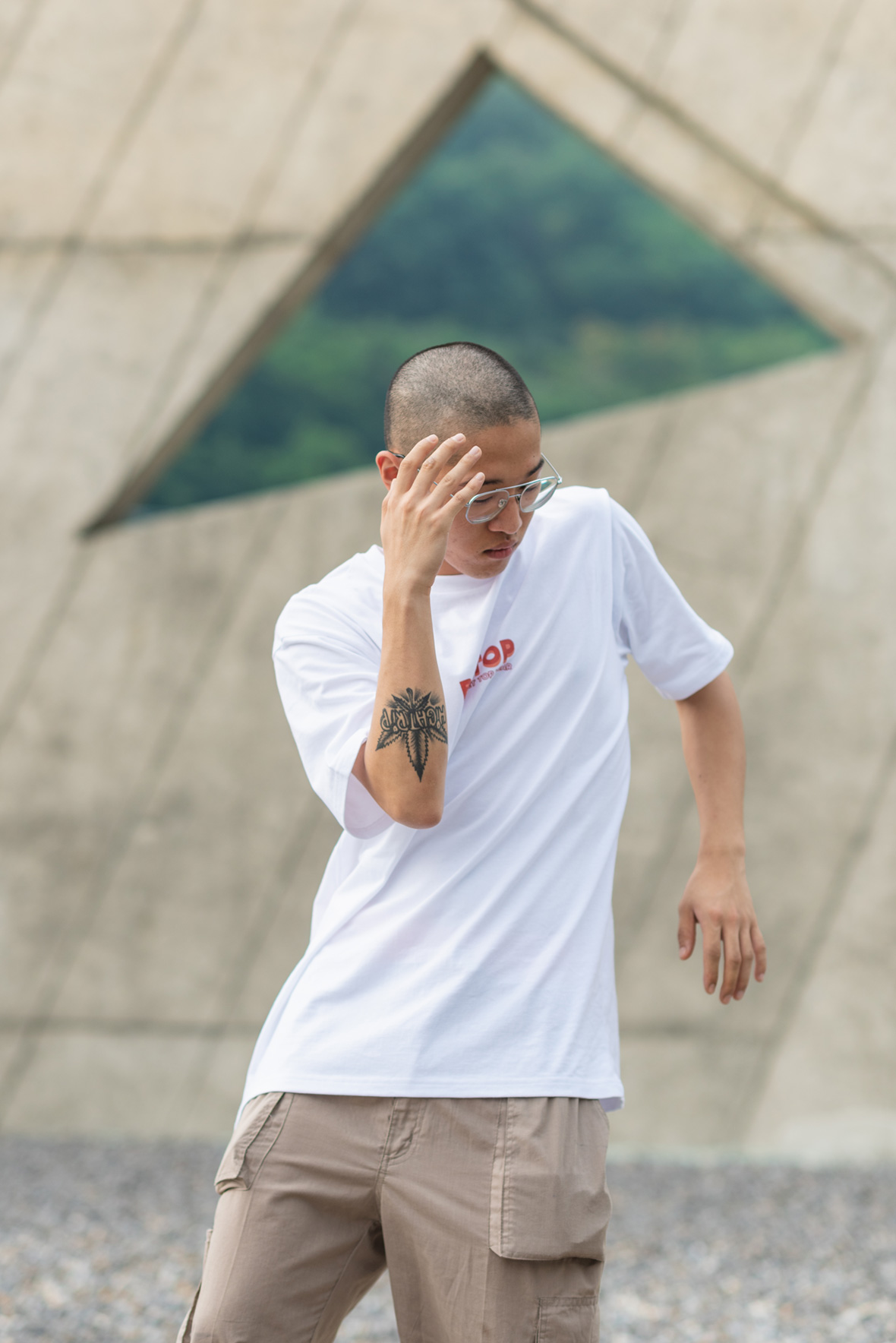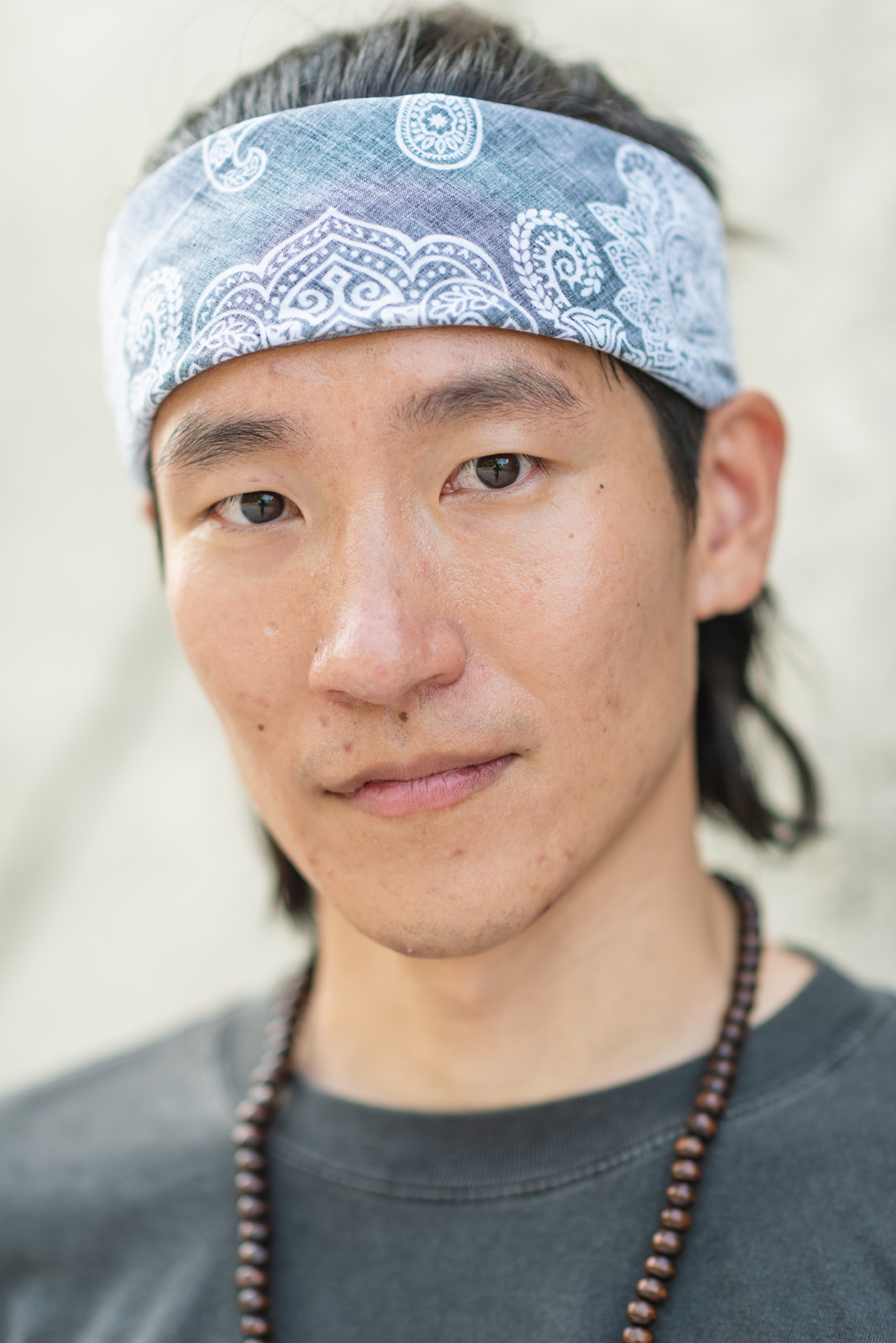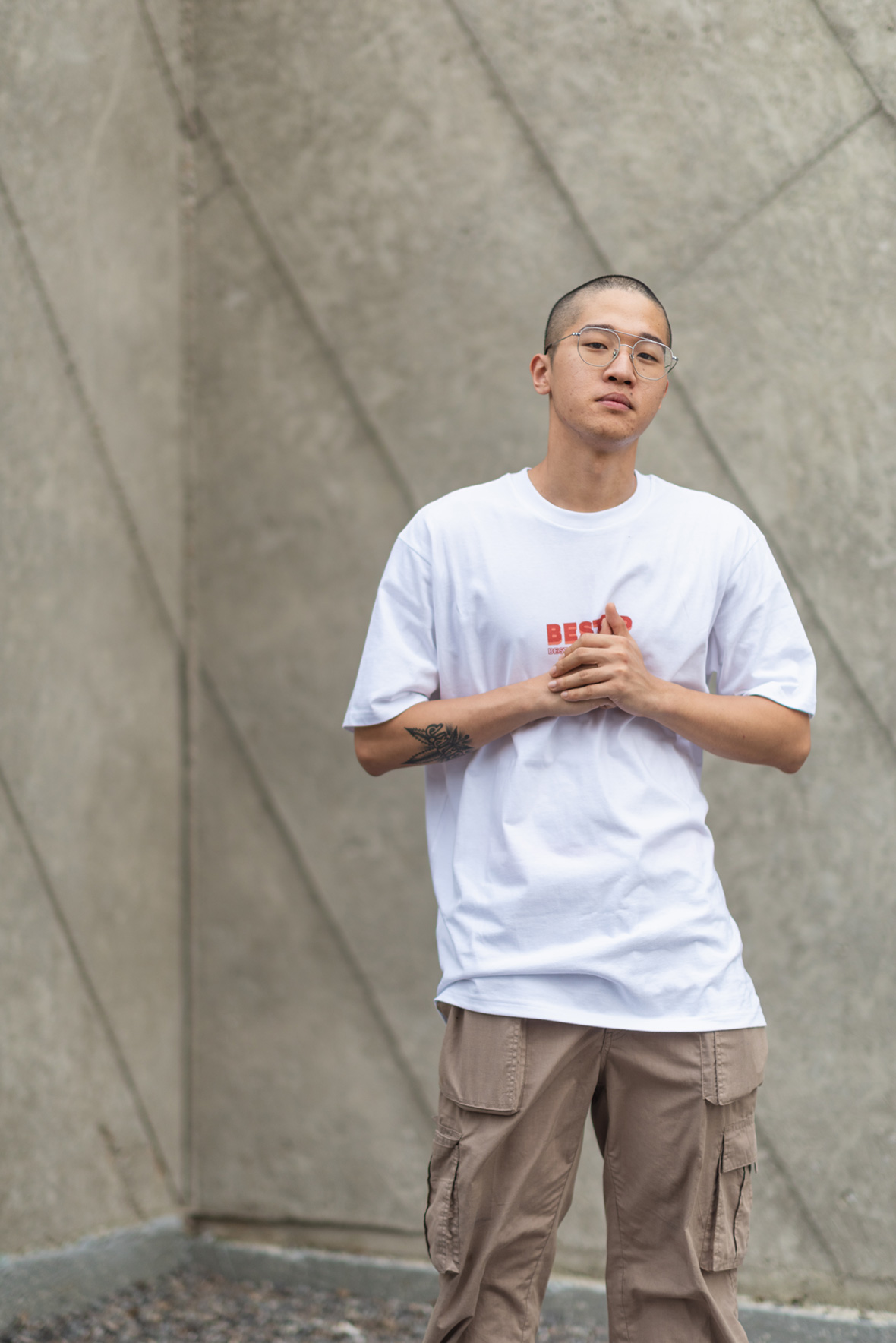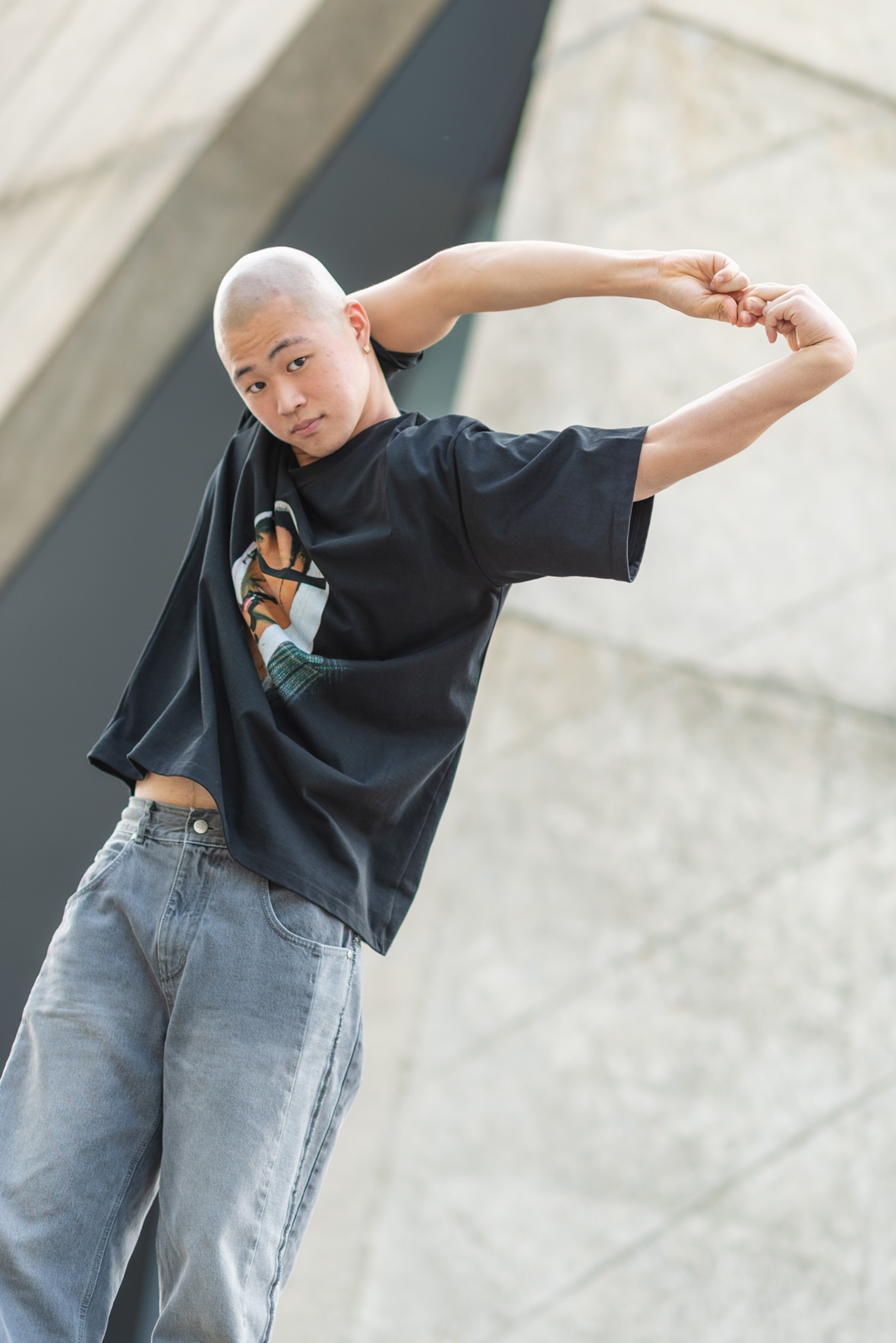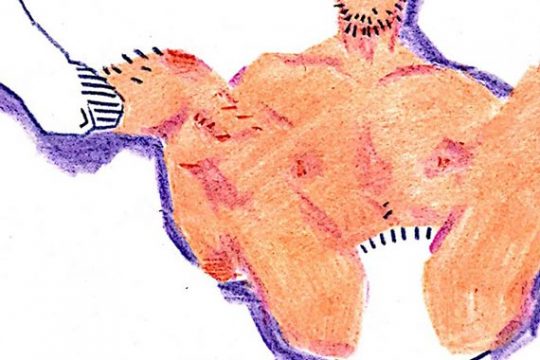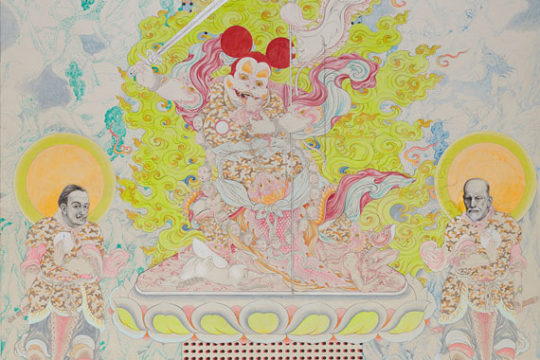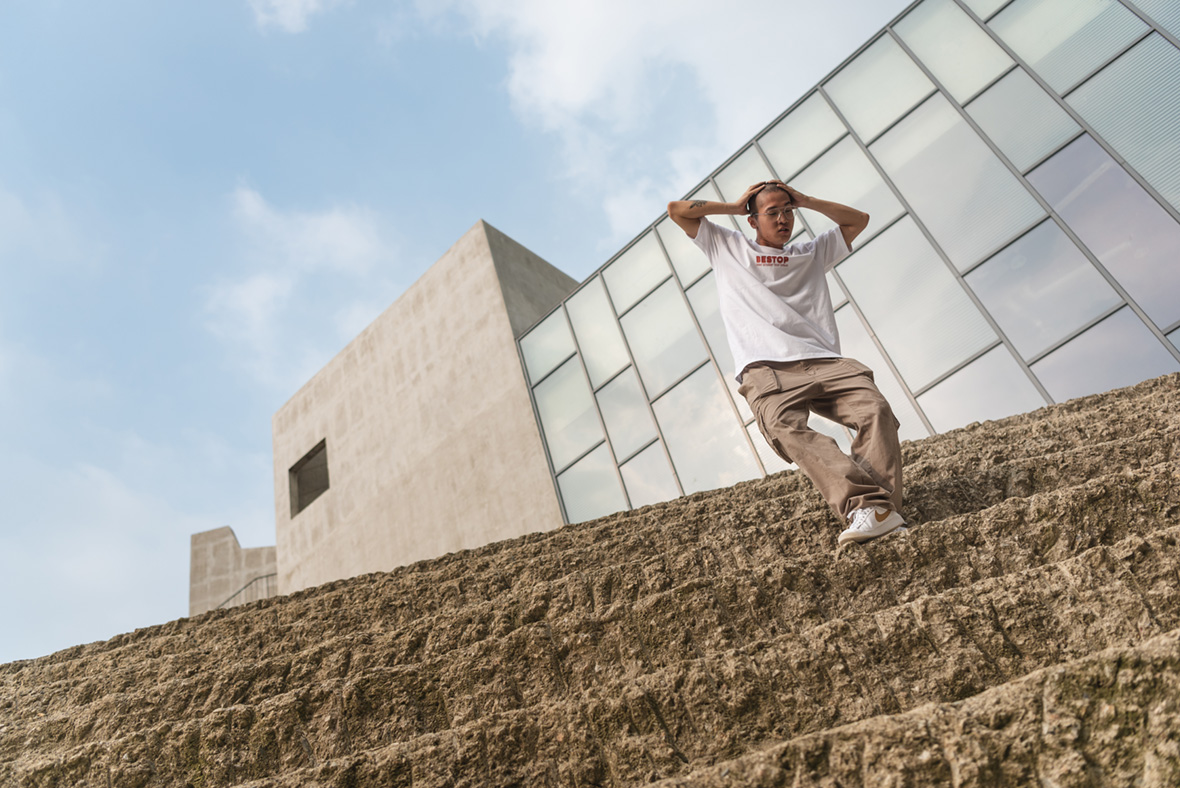
When Ming dances, he seems to hover just above the floor, gliding with patterned footwork resembling an interdimensional moonwalk. Then there’s Mutant, who contorts his arms out behind him in a bone-breaking knot, rippling them as he slides forward like a jellyfish. These two dancers are South Korean kids, but the dance style they’re performing—flexing or “flexn”—was created by Black kids in Brooklyn’s Caribbean neighborhoods. So how did an underground dance from New York find its way to the other side of the world? The internet, obviously. But it also has to do with the dedication of these young dancers determined to learn everything they could, even making pilgrimages to Brooklyn to experience the flexing scene firsthand.
The history of flexing stretches all the way back to Jamaica with a dancer known as Bruk Up. In the early 1990s, he came up with a series of wildly popular dance moves while touring with famous dancehall artists. That music and his moves trickled down to parties in Brooklyn, where lots of kids with immigrant parents from the Caribbean called home. A dance style created in the mid-90s, the bruckup, was even named after him and is considered the precursor to flexing; its moves and attitude directly inspiring its younger sibling scene. But it was the weekly Flex N Brooklyn event that was most instrumental to the style’s popularity, and where flexn got its name. The show, which launched in 1992 and was aired on public access television, was so popular that it lasted 15 years. Because of it, flexing coalesced into its own culture, with its own dancers, crews, moves, and music—all broadcast directly into people’s homes.
By 2005 it had become a distinct culture and officially earned its own name. The moves that make up its foundation include “gliding,” and “bone-breaking,” but also “pausing,” where a dancer’s moves are stopped in brief, jagged intervals as if they’re hitting invisible walls, and “connecting,” where each movement comes in contact a different body part, the hand to an elbow to the shoulder and so on.
关于 Flexing 的历史,一切要从牙买加的传奇舞者 Bruk Up 开始讲起。1990 年代初期,在一次他与众多著名 Dancehall 舞者参与的巡演过程中,Bruk Up 创造了一系列备受欢迎的舞步。随后,这种舞蹈连同音乐流传在布鲁克林地下派对,大多数派对参与者由加勒比海移民后裔组成。90 年代中期,大家以这位传奇舞者的名字来命名这种舞蹈 —— Bruckup,被普遍认为是 Flexing 舞蹈的原始风格。Bruckup 的动作和态度直接影响了 Flexing。但最终让 Flexing 流行开来的是早期一档名为 Flex N Brooklyn 电视节目,flexn 之名也来源于此。这档节目于 1992 年在公共电视上首播,深受观众欢迎,持续播出了 15 年。凭借这个节目,Flexing 开始形成一种独有的文化场景,拥有自己的舞者、团队、动作和音乐,所有这些,都通过一个电视节目,直接展示给普罗大众。
到 2005 年,Flexing 已发展成为一种文化符号,并正式命名。Flexing 的基础动作包括 gliding(滑步)、bone-breaking(断骨)、pausing(暂停,指舞者如同碰到隐形的壁垒,持续断续的动作)、connecting(连接,即每做出一个动作都会与身体的不同部位进行接触,从手到肘部到肩膀等等)。
(注:Dancehall 是上世纪七十年代末在牙买加出现的一种音乐风格,同时也代表在此音乐上即兴创作的舞蹈形式。)

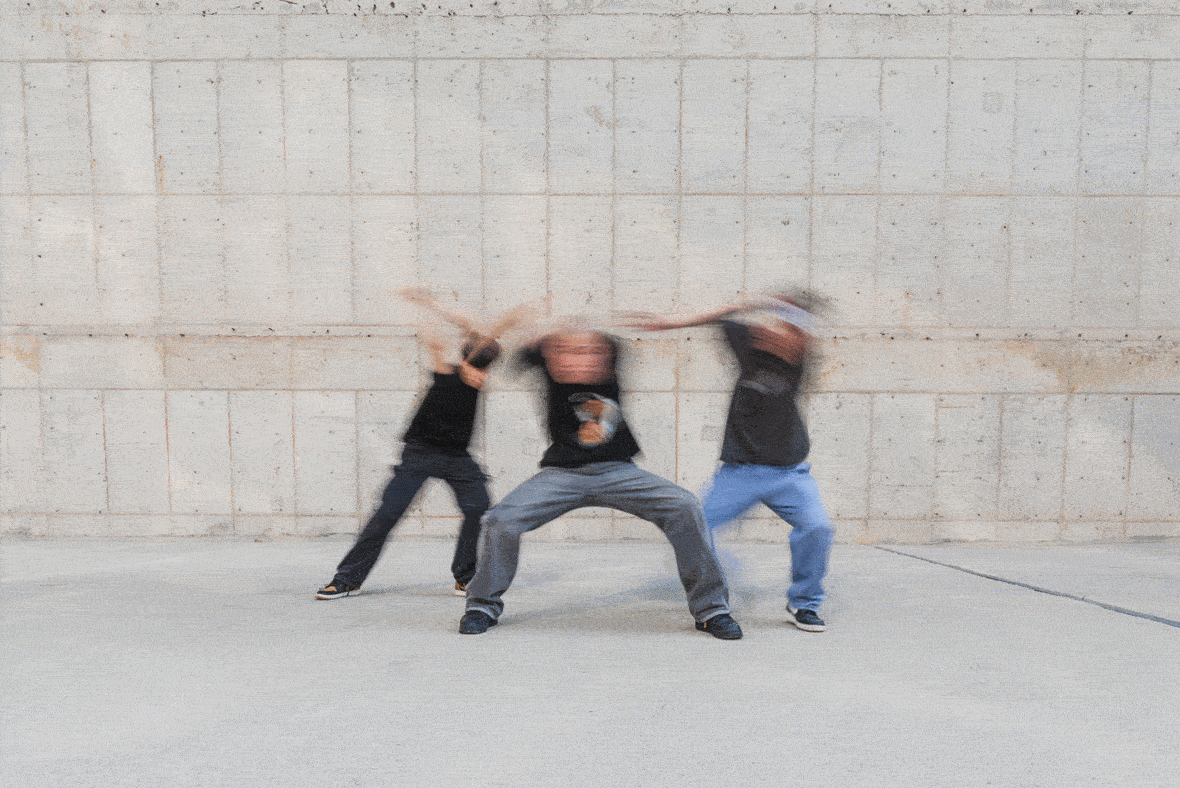
All the subgenres of reggae dancing coexisted in Brooklyn with the brukup, shotta dance, and flexing each finding space on the floor. From the skating rink and social clubs, to parks and basketball courts, it was all fair game. But in 2007, upticks in violence caused the closure of many venues. Flex N Brooklyn was also canceled around this time. Flex dancers had to regroup. They went underground and focused on battling, which was always a part of the culture but they boiled it down until the scene was primarily about competition, almost entirely leaving parties behind. Most of the dancers would practice in anticipation for events like Battlefest and DREAM Ring, where the majority of people in attendance were other dancers. Youtube was also coming into the picture, and dancers could upload their moves to the internet and be viewed across the world.
These days, the culture has spread far beyond Brooklyn, spreading roots to upstate New York, neighboring Long Island, across the river in New Jersey, and down south in Virginia. There are scenes in UK cities and Paris, in Russia, and now this nascent community in South Korea.
在布鲁克林,各种以雷鬼为根源的舞蹈、Brukup、Shotta 和 Flexing 并驾齐驱,各有各的天地。从溜冰场、俱乐部,到公园和篮球场,帮派之间形成一片剑拔弩张的气息。但是在 2007 年,随着暴力事件增多,许多场馆因此倒闭。《Flex N Brooklyn》节目也在这段时间划上了句号。Flexing 舞者不得不重振旗鼓,他们开始行走于地下,更专注于斗舞(Battle)现场。斗舞一直是街舞的一部分,被舞者们强烈推崇,并将其搬上大庭广众的舞台比赛,远远超过了简单的派对意味。大部分 Flexing 舞者为了参加 Battlefest 和 DREAM Ring 之类的比赛都会提前进行演练,而前来参加比赛的选手类型也五花八门。他们开始将舞蹈视频上传至 YouTube,展现给全世界的观众。如今,这种舞蹈文化早已超越布鲁克林地区,一路传遍纽约北部各州、毗邻的长岛,并横跨新泽西州,直达南部的弗吉尼亚。后来又陆续出现在英国、法国巴黎、俄罗斯等地,现在甚至在亚洲韩国生根发芽。
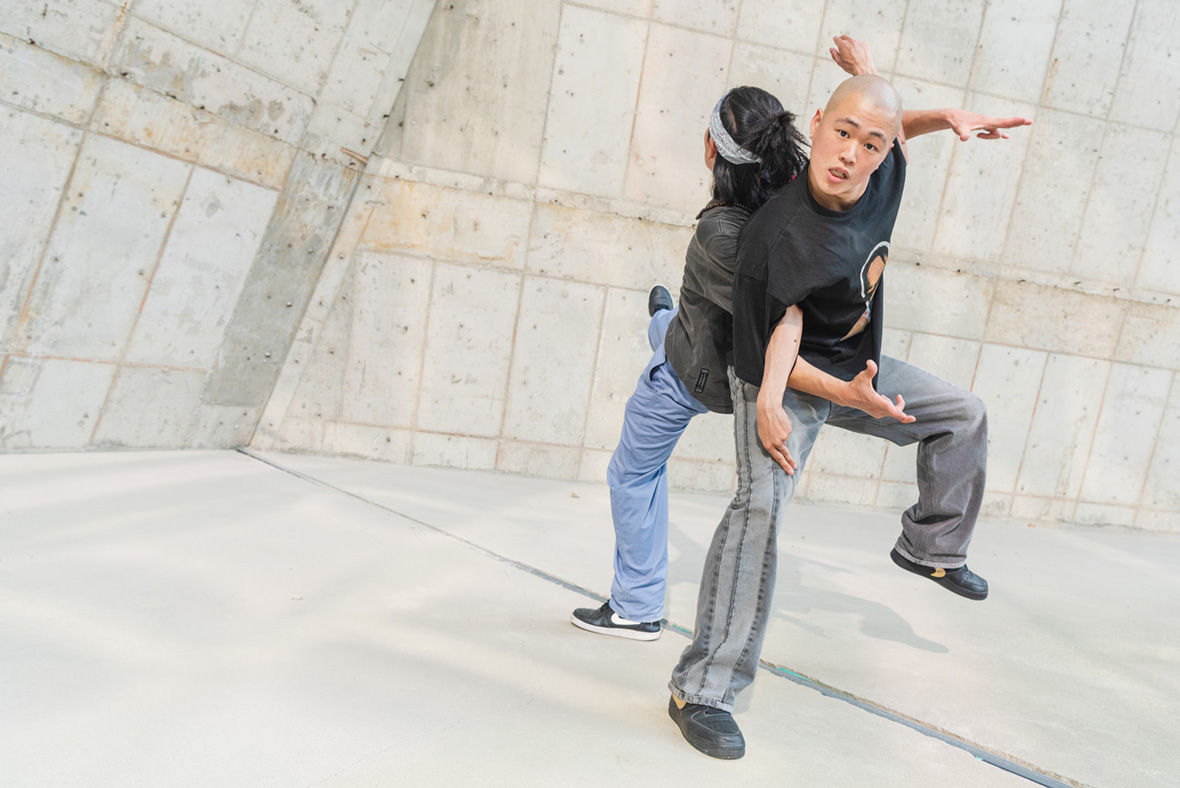
Mutant, whose given name is DoHeon Lee, was the first to discover flexing in Korea. Now 20 years old, he started dancing when he was 13 years old and attending middle school in Busan. “I always wanted to stand out, to be unique,” he says. He trawled Youtube looking for different dance styles, dabbling in different genres like hip hop and breakdancing before finally settling on flexing. “After a year I found flexing and knew it was what I wanted to do.” Bone-breaking was his first experience with the style, and he just kept digging deeper and deeper, absorbing every scrap of information he could find. “I watched endless videos and knew all the dancers by heart.” At school he started a dance club and they practiced at each others’ houses. “We didn’t have a studio so we’d just dance in front of the glass door window at night where we could see our reflection,” he laughs.
Mutant 原名 DoHeon Lee,从小在釜山长大,他是韩国最早接触 Flexing 舞蹈的一批人。现年 20 岁的他,从 13 岁初中时期开始练习跳舞。他说:“我喜欢特立独行,时常想要与别人不一样。”他经常光顾 YouTube,在上面浏览各种舞蹈流派的视频,曾也尝试过嘻哈和霹雳舞等不同类型的舞蹈,最终决定专注于 Flexing。 “在刚开始跳舞的一年后,我发现了 Flexing,并认定这就是我之后的方向。”
起初,Mutant 从 bone-breaking 开始练起,随着不断深入挖掘,他吸收了各式各样的招式。他说:“我反复看着视频上那些动作,尝试烂熟于心。”在学校里,他是舞蹈社的创办人,经常跑到社员家里切磋舞技。他笑着说:“我们没有专门的练舞房,所以只能趁晚上在有玻璃的门窗前跳舞,这样我们就能在镜子里看到自己的舞步。”
Eventually, he met Ming, whose full name is Mingyu Hwuang. He was also from Busan and had been a hip hop dancer for six years already. Ming was already incorporating some bone-breaking into his routines but Mutant introduced him to the other parts of flexing.
“When I watched them battle, it seemed like a show to me,” Ming says, explaining what drew him to the style. “The concepts they come up with are trippy.”
后来,他遇到了 Ming (全名 Mingyu Hwuang)。Ming 也是釜山人,曾经跳过六年多的嘻哈风格。当时 Ming 已经开始尝试在自己的舞蹈中加入了一些 Bone-breaking 元素,在与 Mutant 相识之后,他学会了更多 Flexing 动作。
Ming 解释了 Flexing 吸引他的原因:“每当看到他们斗舞的时候,都令我赞不绝口。他们跳舞的理念令人感觉不可思议,有时甚至能蛊惑你的思绪。”
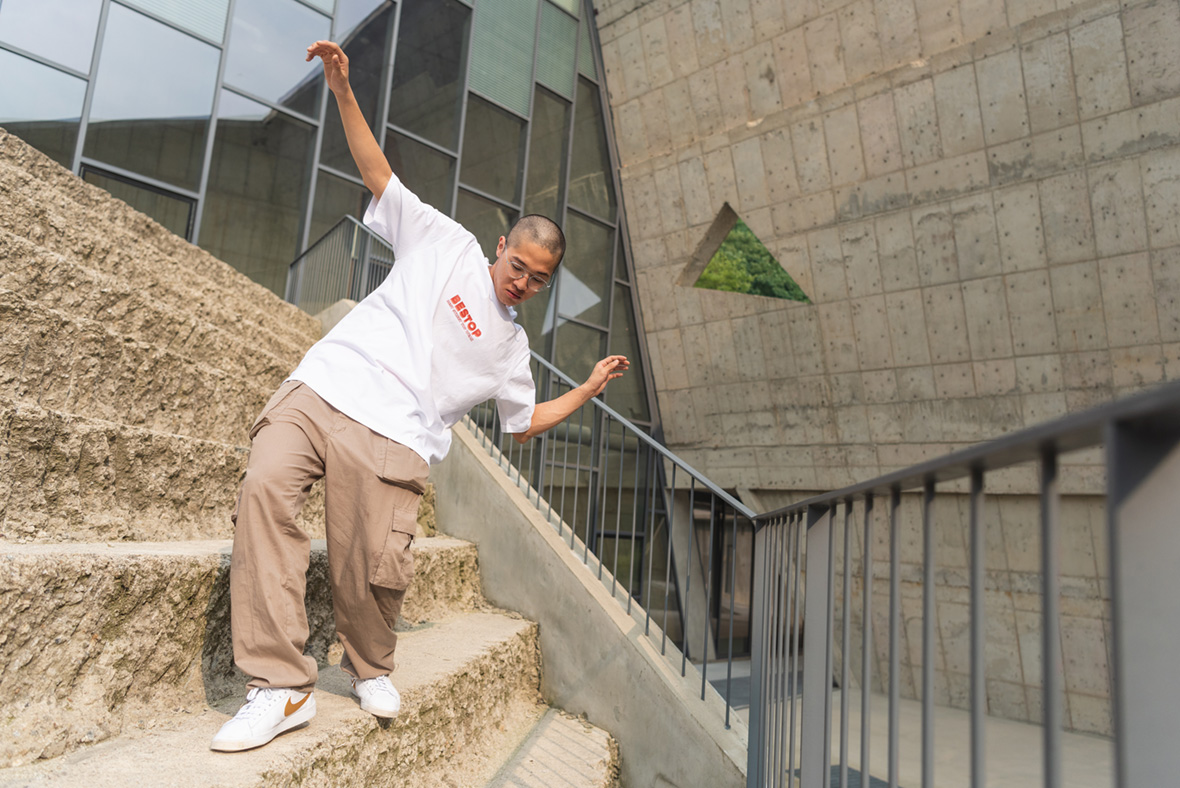
There were a few other flex dancers in Seoul and other places across South Korea, so in 2018 they all decided to come together as a crew called CTPZ. First, Mutant recruited Undead, otherwise known as Jeon Young, who would eventually become the team leader. Undead’s wife BB also started flexing and joined CTPZ along with two other dancers, Minjun and Bruce.
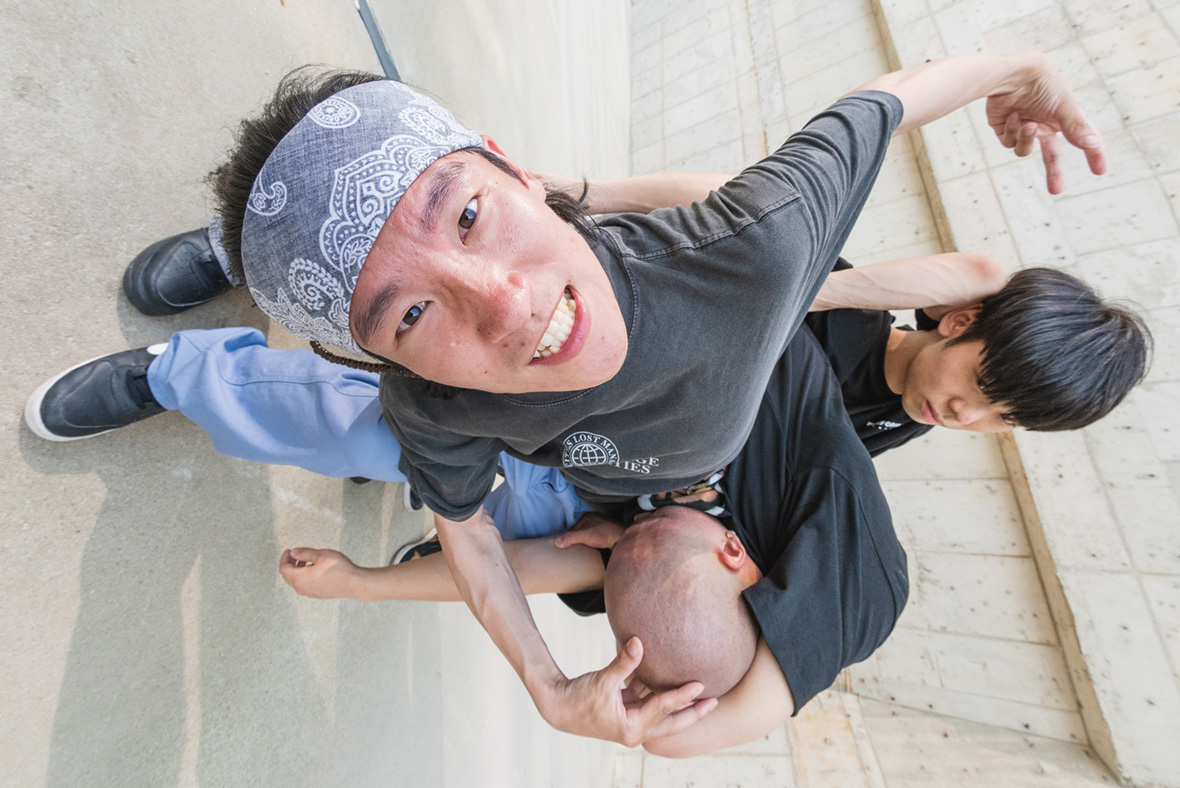
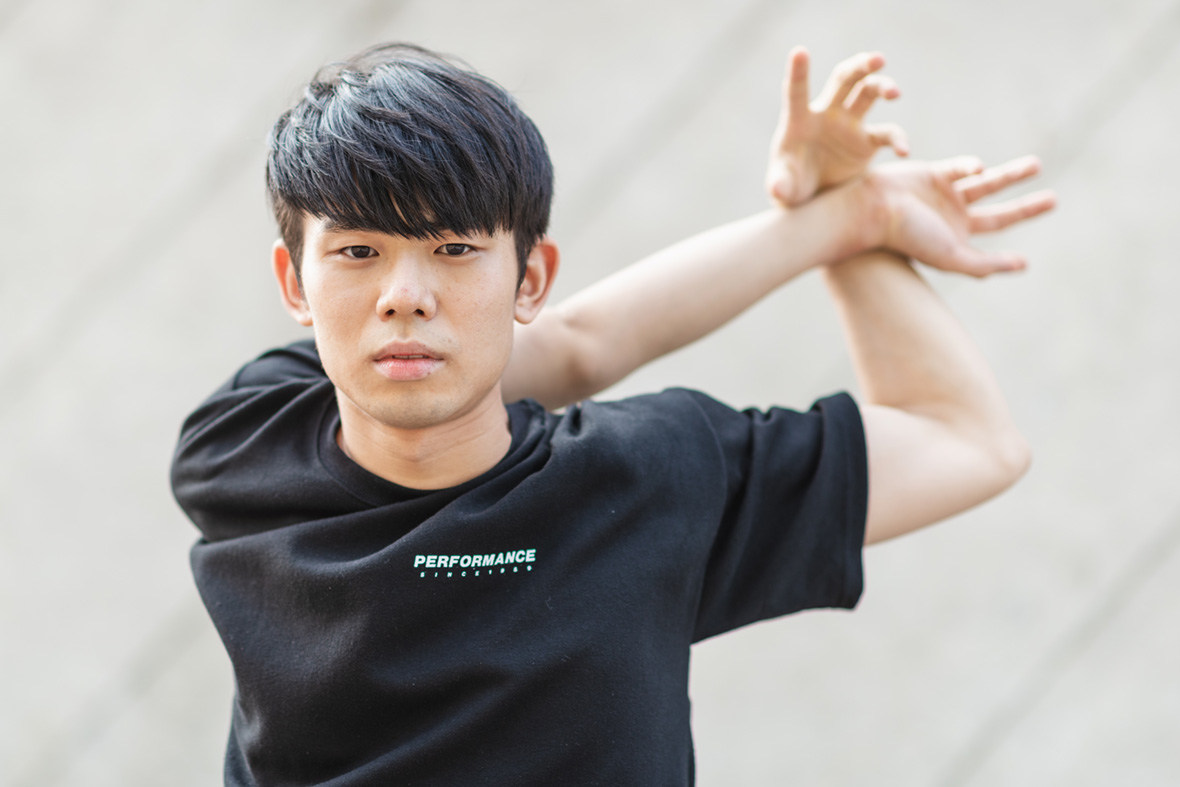
With the Korean scene growing, Ming decided to travel to Brooklyn to connect with dancers there. He wanted to understand flexing better, and he was feeling the limitations of learning from afar. The fact that he hardly spoke any English didn’t stop him at all. “One of the first things I learned there was how a dancer’s style is based on their lives,” he says. “They pull their inspiration directly from their life. That was really impressive to me, seeing how they translate that into dance moves.” In Brooklyn, he was invited to compete in the flexing battle Off The Grid, where he took first place. At the competition, you can see the confidence and joy in his move as he glides about the dancefloor. At one point, he even playfully sticks his tongue out without skipping a beat as the crowd cheers him on.
随着韩国关注 Flexing 的人数越来越多,Ming 决定前往布鲁克林,与当地的 Flexing 舞者交流。他希望更深入地了解 Flexing,毕竟远程学习太过局限。Ming 的英文水平并不是很好,但好像语言并不是问题,他说:“我在那里明白的第一件事就是,舞者的生活和舞蹈风格是息息相关的。他们从生活中汲取灵感,看着他们将自己的经历转化为舞蹈动作,这对我来说真的很震撼。”在布鲁克林,他应邀参加了 Flexing 比赛 “Off The Grid”,并夺得第一名的佳绩。他的舞,举手投足之间充满自信与快乐。在人群的欢呼雀跃中,舞台上的他自信地舞动,甚至俏皮地吐舌头,但从不会漏掉一个节拍。
Later that year, Hitmakerchinx (whose given name is Rafael Martin), a well-known flex dancer and music producer from New York, visited Seoul as part of a mini Asia tour. Mutant traveled a few hours by train from Busan just to meet him.
“Seeing a Korean in a durag by itself was very surprising, but I found it exciting,” Hitmakerchinx laughs. “His whole style and swagger, his persona, is that of a flexer. Seeing him mimic that just from Youtube was mindboggling, like wow, you really love this shit.”
The next time the American flexer visited Korea, he met some other members of CPTZ and was equally impressed. “It’s surprising, uplifting, inspiring—all of those words at once. It made me feel good seeing other people tap into something from the whole other side of the world. They really put in the effort to understand the culture. I don’t think it’s necessary for a dancer to go to their lengths. Necessary is a strong word. But if you really love it and want to learn and be involved authentically, I’d expect them to try and link with someone from the culture’s origins.”
那年晚些时候,来自纽约的著名 Flexing 舞者兼音乐制作人 Hitmakerchinx(原名 Rafael Martin)在亚洲巡演期间访问了首尔。Mutant 特地从釜山坐了几个小时的火车去见他。Hitmakerchinx 笑着说:“光是看到一个韩国人头戴 do-rag 头巾就已经令人感到意外和兴奋了。他的风格,他的范儿完完全全是一个真正的 flexer。况且,他竟然是看着 Youtube 视频模仿这些动作,实在令人难以置信,可以看得出来,他是真的热爱这种舞蹈。”
当 Hitmakerchinx 第二次来到韩国时,他认识 CPTZ 的其他成员,也同样留下了极其深刻的印象:“他们很惊艳,让我眼前一亮,也深受鼓舞。这是我第一次见到他们时的感受。能在世界的另一端发现这么一帮人,感觉真的不赖。并不是所有舞者都能像 CPTZ 一样,付出如此巨大的努力。我并不是说每个舞者都要像他们一样,那要求就太苛刻了。但如果你真的热爱做这件事情,想深入去学习,你需要真正参与其中,你需要尝试多去接触这种舞蹈文化的根源。”
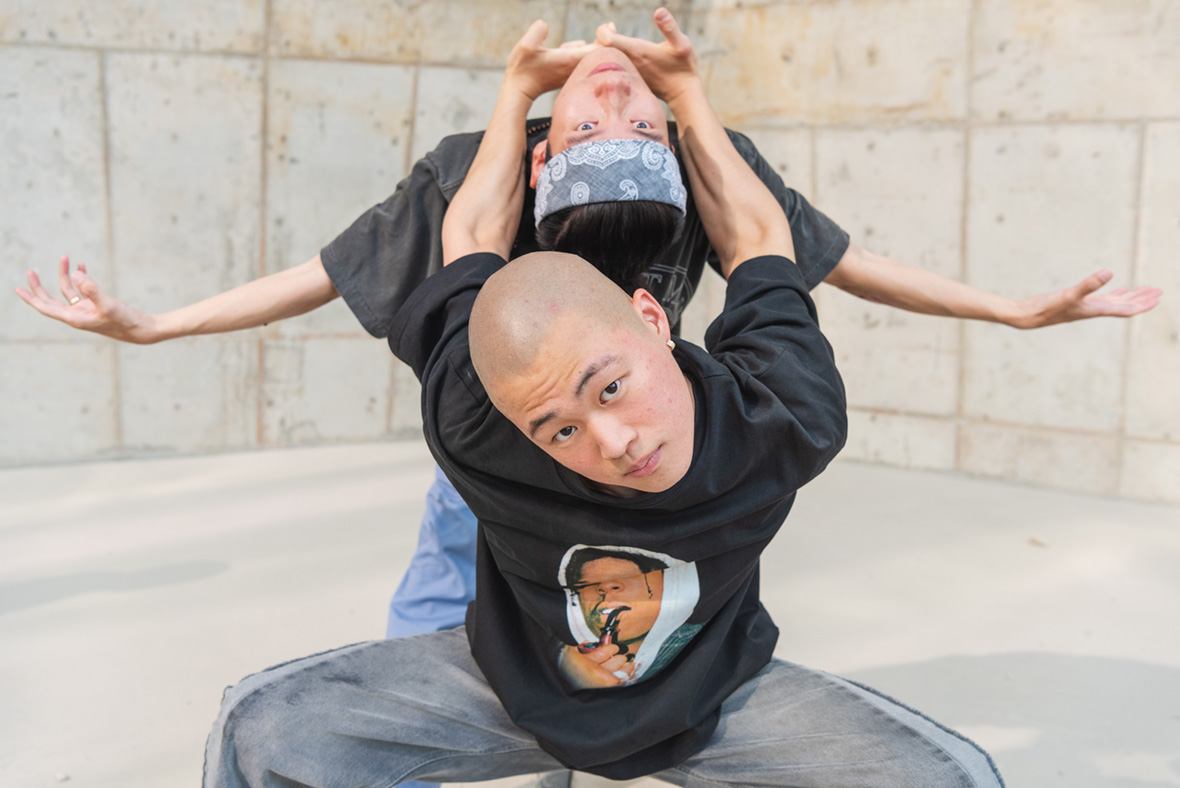
The next year it was Mutant’s turn to visit New York. “Since I already knew who all the Brooklyn dancers were and had been adding them on Facebook, they were leaving comments on my page urging me to visit,” he recalls. “When I decided to go I let people know I was on my way. Hitmakerchinx made a group chat with other dancers there. “Lots of dancers offered to help; pretty much everyone was helpful,” Mutant says. First, he competed at Battle Of The Godz 7. At the end of that battle, he performed a hat trick where he spun it around behind his back and then shot it into the crowd. When someone flung it back to him and he caught it while bone-breaking, the circle exploded and everyone poured into the center in excitement. Even his competitor was showing him love. It was a clear victory. He also competed in Off The Grid and placed second.
次年,Mutant 拜访了纽约。他回忆说:“我在 Facebook 认识了很多布鲁克林的舞者,他们常常在页面上留言邀请我去纽约。”出发之前,我在网上告诉了大家我要去的消息,随后 Hitmakerchinx 也为我创建了群聊,大家都是热爱舞动的同僚。“所有人都很热心。” Mutant 说道,抵达纽约之后他参加了 Battle Of The Godz 7 比赛。
他在那场比赛的末尾,上演了一段精彩的 “帽子戏法”,将帽子放到背后旋转,然后投入台下的人群中。当有人把帽子扔回来时,正在做 bone-breaking 动作的他抓住了帽子,观众们一下子炸开了锅,每个人都兴奋地涌到舞台中间,就连对手也向他表达了赞许。这是一场绝对的胜利。之后他还参加了 Off The Grid 比赛,获得了第二名。
In Korea, flexing has failed to grow beyond the original six dancers so far. Ming says he teaches some workshops and that the kids seem serious about it, but he still hasn’t seen much growth outside those classes. There are other styles of street dancers and even a dancehall community in the country, but their reaction to flexing tends to be mixed. Ming competes in some battles with hip-hop dancers and says it’s younger kids who tend to be the ones that like flexing while many others consider it too strange and unfamiliar. Mutant, who now lives in Seoul, says he’s observed even less interest. “Other street dancers don’t really know about flexing yet so we just perform at their events instead of battling,” he says. “We used to try and let everyone know about flexing and invite other dancers to try it out, but they’re not too interested.”
截止到目前,韩国 Flexing 还局限在最初的这六名舞者中。Ming举办过一些讲座和教学活动,来学跳舞的孩子似乎也很感兴趣,但是在课堂之外,跳 Flexing 的人数并没有增加太多。韩国也有其他类型的街头舞者,甚至还有一些舞厅社区,但他们对 Flexing 的看法好坏参半。Ming 曾参加一些比赛,和其他的嘻哈舞者同台斗舞,他发现喜欢 Flexing 的往往是年轻一些的舞者,而其他人则觉得这种舞蹈过于陌生和奇怪。现在居住在首尔的 Mutant 说,他发现人们对这种舞蹈的兴趣甚至比以往更少。他说:“一些舞者甚至都不知道 Flexing 是怎么回事儿,所以在这些活动上,我们基本上只是在表演,而不是在斗舞。我们有尝试向大家推广 Flexing,还邀请了其他舞者来试试看,但他们都兴趣乏乏。”
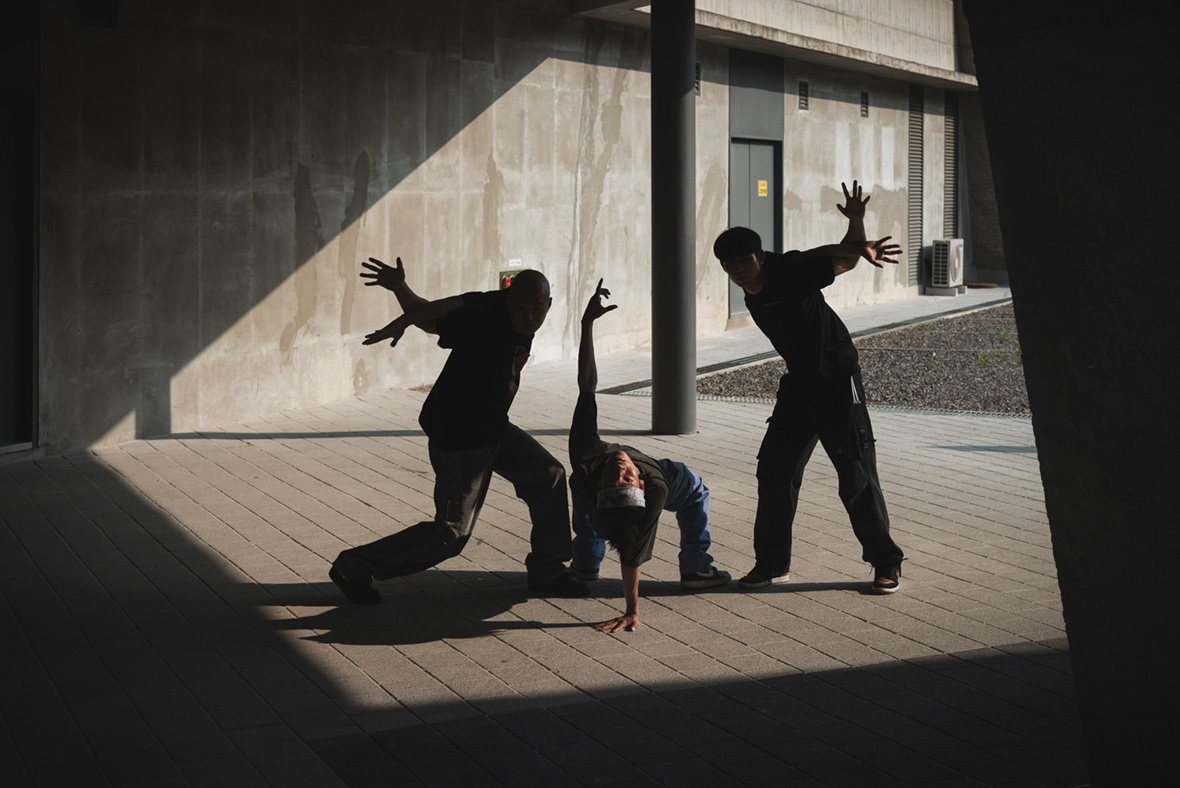
The reaction from non-dancers has been more positive, however, and CTPZ has shifted their focus towards the wider public, though it’s led to a fracture within the dancers and Ming has left the team. “I’m more interested in dancing than turning it into some commercial career,” he says.
Undead is less focused on flexing these days and more interested in the practical applications of the dance moves. “Flexing appealed to me because my personal style is very flexible,” he says, “But now I’m learning more genres and applying them to my career.”
Flexing has had significant success in the Korean entertainment world, with the dance performed on local television shows and with famous musicians like (G)I-DLE and Jay Park. Pretty much every zombie movie in Korea has flex dancers in it, with Undead choreographing zombies’ movements in everything from Train To Busan to the Netflix show Kingdom. “People here often find flexn scary,” Undead laughs. So it’s a perfect fit.
不过,那些原本不怎么跳舞的人反而对 Flexing 更加积极,为此,CTPZ 将他们的重点转移到了更广泛的大众上,但这也导致团队里出现了分歧,最后 Ming 选择离开了团队。他说:“我对跳舞本身比较感兴趣,我不想将它商业化。”
Undead 现在也比较少专注于 Flexing 了,而更多地研究如何运用这些舞蹈动作。他说:“我的个人风格比较灵活,希望在舞蹈中加入更多元素。现在我在学习更多不同风格的舞蹈,希望能将 Flexing 运用到我的整体创作中。”
Flexing 曾经在韩国娱乐界有过一定的影响,并出现在当地的电视节目中,(G)I-DLE 和朴宰范等著名的艺人也曾表演这种舞蹈。而且,几乎每部韩国僵尸电影都会出现跳 Flexing 的舞者,Undead 还曾参与设计了多部影片的僵尸动作,例如《釜山行》和 Netflix 电视剧《王国》。“在韩国,人们通常都会觉得 Flexing的动作有点恐怖,所以也正好合适。” Undead 笑着说道。
Like our stories? Follow us on Facebook and Instagram.
Instagrams:
@tr_fasho_ming
@ctpz_mutant
@ctpz_undead
@ctpz_bruce
Contributor: Mike Steyels
Photographer: Chris da Canha
Chinese Translation: Olivia Li
Instagrams:
@tr_fasho_ming
@ctpz_mutant
@ctpz_undead
@ctpz_bruce
供稿人: Mike Steyels
摄影师: Chris da Canha
英译中: Olivia Li

